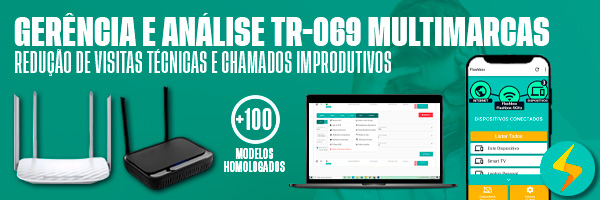Router provisioning is a part of the configuration process that prepares the device for use by the end user. The term provisioning it also applies to other aspects of the network, such as servers and users, and each type involves different parameters.
It can often–get confusedro provisioning with the “configuration” of the device. In fact, the term applies to a specific type of change, which is aimed more at preparing the device and not at its customization.
Instead of preferences, provisioning is concerned with another type of issue such as connectivity and security. Once the device is provisioned, it can be configured by the end user as needed.
The provisioning process is usually done in an automated way, in order to improve the efficiency and security of operations. Thanks to it, it is possible to reduce the time needed to configure a device, something that can be done by just one person.
As the process is designed to be used on many different devices, it is also uniform and can be learned quickly.
Provisioning and configuration
Provisioning is typically a process performed by the IT professional, and is intended to ensure that the device can be used by the end user without any issues.
Configuration, on the other hand, is about getting the device to operate within the parameters designated by the end user.
An easy way to understand the difference is to remember that a poorly configured appliance can be provisioned by the technician, but a poorly provisioned one cannot be configured by the end user.
router provisioning
The provisioning of the router is intended to allow it to communicate correctly with both the ISP and the client devices that need a connection.
The process is normally done using a USB device that has the necessary program for provisioning. On the other hand, some devices that are able to connect to the internet can download the necessary program from the cloud through an interface.
The exact steps followed by the program vary depending on the need. Some possibilities are:
- Install an operating system, its drivers and other tools;
- Install software business;
- Change specific settings such as IP address;
- Partition a hard drive;
- Connect to the Internet, with cable or Wi-Fi;
- Scan the system for errors.
THE Anlix's Flashbox solution, is the best option for provisioning the routers in your operation, leaving them ready for use according to the required specifications.
software provisioning
When provisioning a device as notebooks and smartphones, you may need to install software and specific applications for it to perform a task. Usually, the process aims to allow the device to operate on the internal network, which means installing browsers and security applications such as antivirus and antimalware to prevent attacks.
Depending on the company, however, this process may vary, with the installation of other types of software.
User provisioning
The router can also be configured to accept or reject specific devices based on your settings. In practice, this allows networks of companies to identify employees and connect them correctly.
In companies that adopt BYOD (“bring your own device” or “bring your own device”), the new employee will need to have their notebook or smartphone provisioned to have network access. That can be done quickly and automatically by the IT department.
This is even more important when the company has a virtual network that allows only certain people to have access to certain servers.
The provisioning process, however, is not only useful in these cases. With an automatic routine, it is possible to provision new devices, installing specific programs such as antivirus and others software needed for the job. These devices are then delivered to the recipient ready for use.
In enterprises, provisioning doesn't have to be done exclusively on employee devices. It is possible to create specific routines for customers or suppliers, especially if it is necessary to ensure that they do not have access to certain areas of the network.
Why provision the router?
In essence, provisioning ensures that a device can operate within a network and be used by the end user. It is a process used by IT to skip configuration steps that might be cumbersome or tedious for an inexperienced person.
It is important to remember that routers act as bridges between end users and the provider, and their correct provisioning is necessary so as not to interfere with the user experience.
This is important because the configuration of a router can be beyond the knowledge of the user, who will not know how to solve a simple problem and will have to resort to technical support. That's why a solution with Flashbox is so worthwhile for the provider, which facilitates its operation and router provisioning, reducing support calls, saving time and money for the provider.
By making these adjustments automatically, router provisioning ensures that the device is truly ready for use. Combining this with other remote monitoring and maintenance features, it is possible to minimize the need for direct human interference via technical support.




Leave A Comment